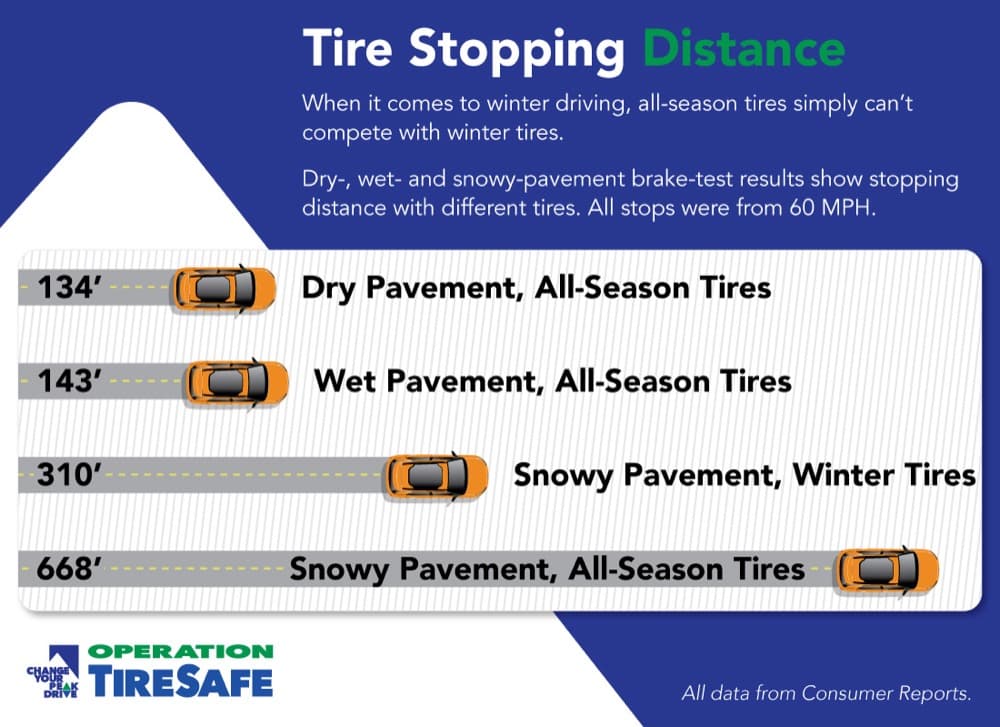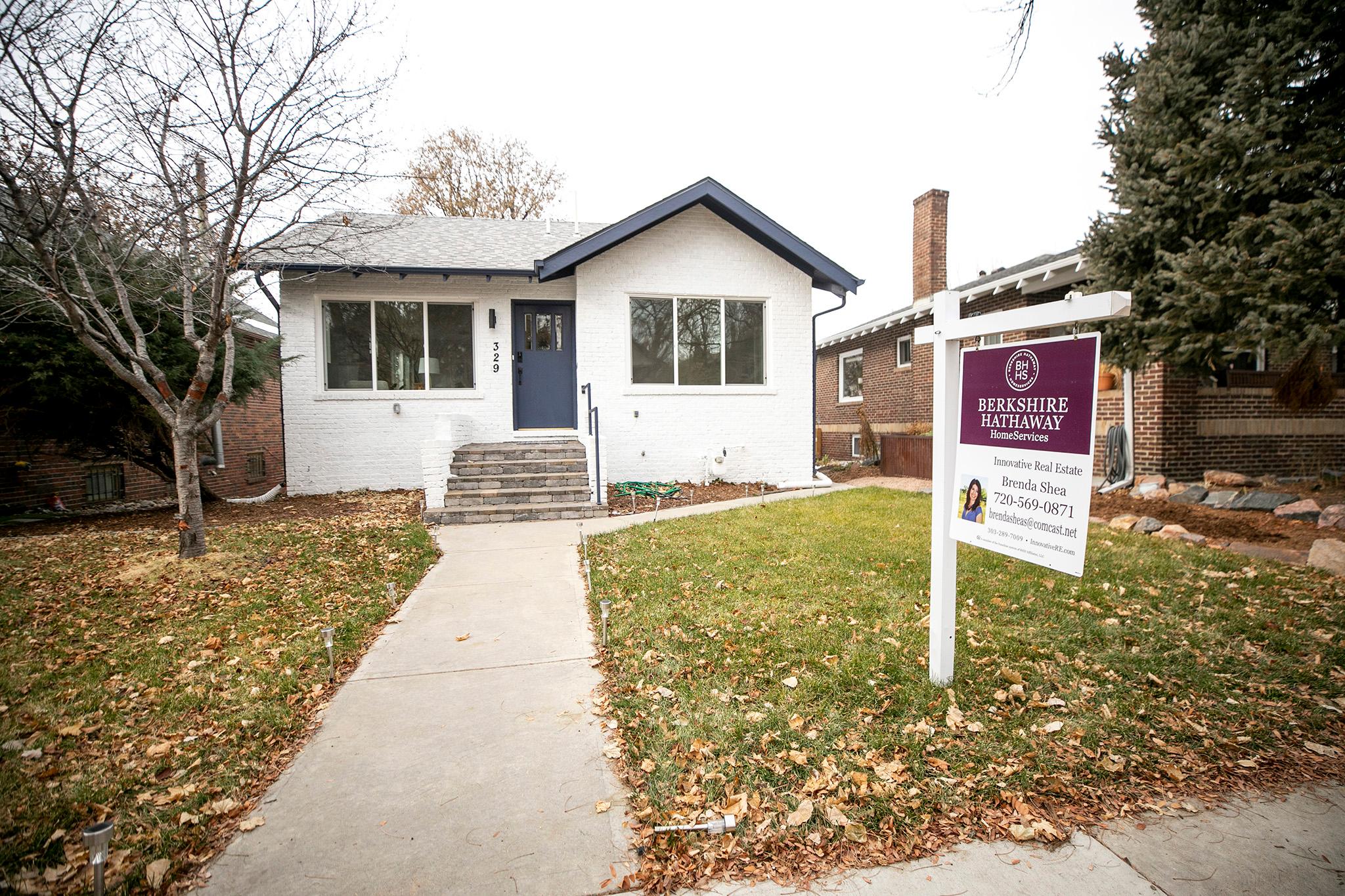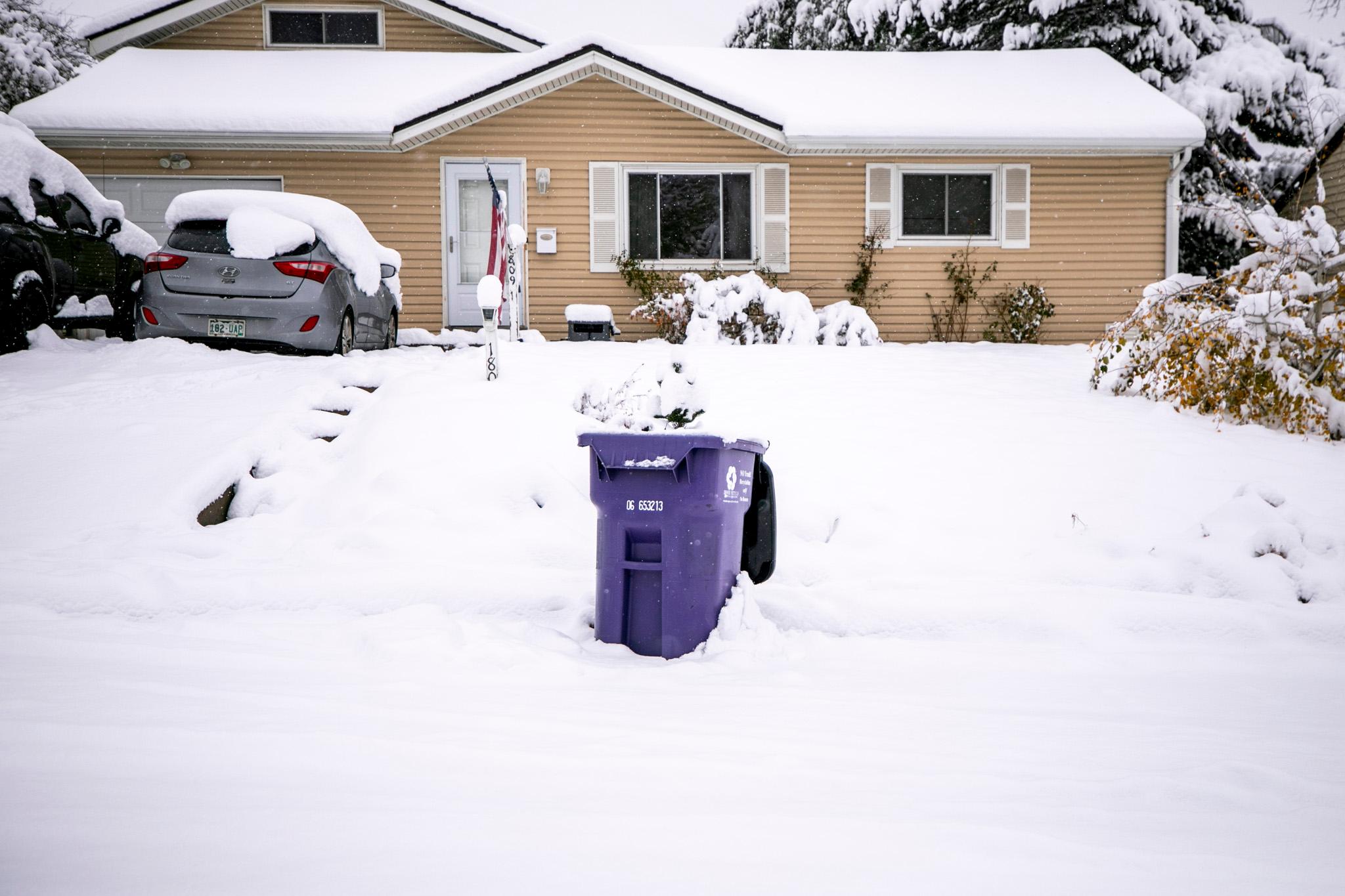Denver taught me a lesson last month. I had managed to avoid driving in the snow here, but a week of sub-freezing temperatures and leftover crud left me relying on my partner's car.
With that in mind, and another storm inbound, I wrote up this quick guide to Colorado tire buying.
All-season or snow tires?
Snow tire pros and cons:
Snow tires, aka winter tires, are going to give you the best traction and shortest stopping distances on snow and ice. If you need to drive no matter the conditions, or if you do a lot of mountain driving, this is the kind that will keep you safely on the road in the broadest spread of conditions.
TireBuyer, for example, recommends winter tires anywhere that it's regularly below 45 degrees, such as here.
The major tradeoff is that snow tires aren't meant for warm-weather driving. In fact, they'll wear out much quicker when it's hotter. The solution is to keep two sets of tires -- one on your car, one in storage. That's difficult in an apartment, but you can always beg your home-owning friends for space.
You'll likely get several seasons or more out of your typical snow tires, and prices generally start at about $80 per tire, or $320 for the set, plus at least $100 more for various taxes, service fees and shipping. You will need to buy four. Also, it may be worth buying an extra set of wheels – more on that later.
All-season pros and cons:
All-season tires are designed to stay on your car year-round, obviously, but they don't give you the best possible performance in snow and icy conditions.
They can take twice as long to brake in snowy conditions, according to CDOT, and they may not be legal for driving during "chain law" conditions on I-70 and other roads. These tires also can stiffen up in cold temperatures, losing performance.
On the upside, you will save the time and cost of changing your tires out every year, which may be $60 or more for service alone, depending on your setup. All-seasons also tend to perform better in dry conditions.
If you go this route, it's probably worth getting the best, grippiest set you can afford.

Finding the right brand:
I'm not going to make specific buying recommendations here, but I have compiled some good resources. First, though, you'll need to get your tire size, which is printed on the side of the tire. It should look something like this: "P215/65R15 95H." Here's a guide to interpreting that.
Now it's on to choosing your tire. Consumer Reports has a guide but it requires a $7-per-month subscription. TireRack, which sells tires, also has its own interactive guide.
Once you've got that decided, you should probably shop around. If you have a preferred mechanic, ask them how much they'll charge you for the parts and labor. Then go online and check their prices against what you can get at one of the major retailers, such as TireBuyer or TireRack.
Your mechanic may either match the retail prices or may install tires that you purchase yourself. If not, many online retailers (including the above) will ship directly to participating auto shops. Make sure to compare shipping costs: TireBuyer shipped mine for free. TireRack didn't offer that, but they do have a distribution center in Denver where you can pick stuff up for free.
CDOT also keeps a list of local shops that offer discounts.
What about the wheels?
The tire, as you know, is only part of the round thing. The other part is the wheel, which is what you put the tire on.
Now, you can potentially save money in the long run by buying new wheels along with your tires. That's going to cost you at least $200 more upfront, unless you get them used, but it should be much easier/cheaper to sub out the entire wheel-tire combo than it is to constantly pull tires on and off your single set of wheels.
Also, if you've got the equipment (namely, a lug wrench and a good jack), you can swap out wheel/tire combos yourself.
What do you think?
When do you install your winter tires? Do you think they're necessary? Do you get winter wheels too? Let me know: [email protected].













